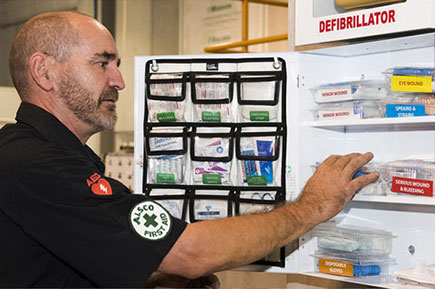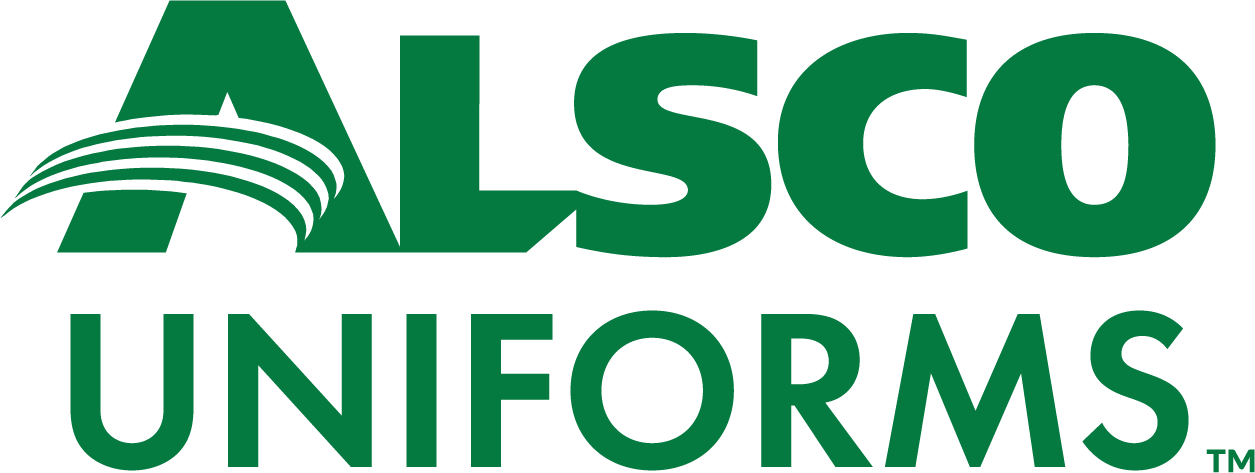
Did you know there is an expiry date on most of your first aid kit supplies? It’s one of the many reasons that first aid kits are not to be bought, stored and forgotten.
Safety in the workplace means having the correct tools and equipment ready at all times.
In Singapore, the Workplace and Safety Act demands access to first aid treatment and occupational safety for all.
So we’re going to teach you the essentials of managing a first aid kit. You’re going to learn what is actually inside a first aid kit; how to inspect, sanitise and restock it; why you need first aiders and more.
We’re also going to show you an easy, affordable solution for staying WSH-compliant with zero hidden costs.
The Importance of Maintaining First-Aid Kits
No matter the size of your business, owning and maintaining first aid kits is a primary responsibility.
Singapore has been making strides to nurture a safe and healthy workforce. Over the last 14 years, the fatal injury rate in the workplace in Singapore has fallen more than 75%; the lowest in recorded history. As taxing as it may seem to keep up with WSH regulations, the results are undeniable.
There are no life hacks for proper safety: it needs systems and procedures backed by diligence and practice.
What is Inside a Workplace First Aid Kit?
In order to maintain first aid kits (which can cost between $80 to $200 in Singapore), first, understand which kits you require and what is inside them.
One of the many things your First-Aiders will learn during their training is inspecting, sanitising and restocking first aid kits (it is the employer’s responsibility to train and appoint these first aiders).
For a comprehensive breakdown of the required list of workplace first aid kit contents, refer to Annex A of the Ministry of Manpower’s A Guide to the Workplace Safety and Health (First-Aid) Regulations.
A typical first aid box’s items and uses include:
- Dressings: applied to the wound, it helps the healing process while protecting the area
- Crepe bandages: light support for sprains and strains
- Triangular bandages: as a sling, towel or tourniquet
- Gauze: absorb blood; used as a bandage
- Hypoallergenic tape: allergen-free adhesion
- Scissors: cutting bandages, clothing, etc
- Safety pins: splinter removal and securing bandage sling
- Disposable gloves: infection barrier
- Eye pads & shield: cushion and protect the eye from infection
- Resuscitation mask: a face shield that prevents infection while providing CPR
- Sterile water or saline: wash out the eyes and clean cuts
- Torchlight: in case of a power outage or for extra light
![]() PRO TIP: An orientation program is required to inform employees about the type and location of first aid kits and facilities, as well as the specific hazards of your workplace.
PRO TIP: An orientation program is required to inform employees about the type and location of first aid kits and facilities, as well as the specific hazards of your workplace.
How Many First-Aid Kits Do I Need?
This is an estimation of several factors such as the number of employees, workplace layout (you need a kit on every floor) and the nature of the industry and its hazards.
Having the right number of first aid kits in the right places is critical for safety.
Ratio Of Employees To First-Aid Boxes
| No. of employees | No. and type of first-aid boxes |
|---|---|
| Less than 25 employees | at least one Box A |
| every 50 employees | at least one Box B |
| every 100 employees | at least one Box C |
Note: One box B is equivalent to two Box A. One Box C is equivalent to two Box B.
What Are the First Aider’s Responsibilities?
The First Aider has the responsibility of restocking the first aid kits.
There must be enough First Aiders within an organisation to ensure all work shifts, staff holidays and potential emergencies are accounted for.
| Type of workplace | No. of employees | No. of first-aiders |
|---|---|---|
| Quarries, construction sites, shipyards, petroleum refiners, woodworking factories | 26-100 | one |
| More than 100 | one for every 100 persons employed or less | |
| All other factories and workplaces covered under the Regulations | 26-150 | one |
| More than 150 | one for every 150 persons employed or less |
The second role that a first aider takes on is an active one. In the event of an emergency, they must assess the situation and take the best course of action (which usually involves accessing a first aid kit and first aid facilities and knowing how to use them). When help arrives, they debrief the medics and keep a record of all treatment.
Inspect The First-Aid Kit

Alsco’s managed first aid rental service takes care of everything
Organise the items inside the kit so that they are ready-to-use.
Create a maintenance checklist to schedule, replace, replenish and restock your first aid kits (checklists are useful tools that maintain routine and prevent simple mistakes – use them in all your procedures).
Also, check for the following:
Damaged or Contaminated Items
Is any item damaged, dirty or used? First-aid items are normally single-use to prevent contamination. Anything that has been used may be considered contaminated. Dispose of these immediately, and make a note of their disposal.
Expiration Dates
Are any items expired? First-aid items have a shelf life like any other product. Check the expiration date marked on each package – this includes sprays, washes, ointments, etc.
Having a rotation and replacement system will ensure similar items with different expiration dates don’t get mixed up. Place the older (but not expired) items in front. Dispose of all expired items and make a note of their disposal.
Review Usage
Which items are used more frequently? Insights gained from reviews can help you plan better, avoid shortages and identify the hazards that are common to your workplace.
Think of the type of injuries that have occurred in the past:
- Cuts and bruises? You will need a lot of bandages and gauze.
- Dust, chemicals and debris in the eyes? You will need more eyewash and eyes shields.
- Lots of heat-related accidents? You will need more burn gel.
Anticipating and accounting for injuries goes a long way in creating a safer environment for everyone. Keeping a clear record of injuries also helps.
Sanitise The First Aid Kit
Empty all items out of the first aid kit temporarily. This is a good time to dispose of any scraps or contaminated items that shouldn’t be there. Put on a pair of latex gloves, then spray and wipe down the empty kit with quality disinfectant. This helps remove any blood, germs and other contaminants. Once everything has been sanitised, return the items to their designated positions.
Restock The First-Aid Kit
At this point, everything in your first aid kit should be up-to-date and functioning. Keep a list of the expired, damaged, contaminated and unusable items that were disposed of during inspection. This list will help you replenish and restock.
Keep in mind the usage patterns of your workplace. If you use a lot of eyewashes, for example, be sure to order more than enough. If you have less than a box of bandage strips left, order another. Order using the principle of ‘better safe than sorry.’
Maintaining first aid kits is a time-consuming affair. Avoid the hassle and get Alsco to conduct a free assessment of your premises to determine your requirements, provide hospital-grade supplies, quarterly services and restocking services – all for one low monthly fee. Our kits are fully-compliant with Singapore’s safety regulations.
Contact us today for a customised quote or to book an assessment.

